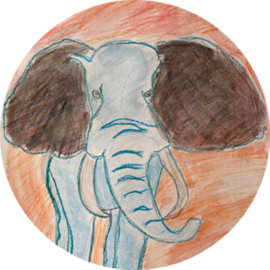At the Crossroads of Intellectual Property and Software Engineering
A hard rain’s gonna fall is one of my favourite songs. As always with Dylan there’s a message, but it’s up to the listener to figure out what it is. The song speaks to me of the desolation that follows the realization that the more you learn, the more the terrain of knowledge expands. As I dove deeper into the domain where intellectual property and software engineering collide, I encountered this same unsettling but exciting feeling.
This thought surfaced the other day as I had the chance to really dig into the vast and complicated domain where intellectual property meets with software development. The aggregate expertise in the Zoom room was awe-inspiring and the curriculum rigorously walked us through all the relevant subfields: The ins- and outs of open hardware; the power and perils of building your products on top of FOSS-stacks; the dos and don’ts with design patenting, and so much more.
With a solid background in digital product development, I admit I went into this thinking I had a pretty good grasp of the fundamentals. I’ve crafted the finer points of SLA’s, GDPR-compliant SAAS and PAAS-EULA’s for both B2B and B2B2C’s. I know my way around PX4 and BSD. I’ve even had a brush with the legal implication of selling NFT’s.
Now as I slowly start seeing the contours of my previously unknown unknowns, I’m not so sure anymore.
One big insight was the realisation that software based innovation coming out of academia often face an almost literal threshold, in that the software licenses used don’t allow compiling code for commercial purposes, and that buying commercial licences for compilers alone can often be prohibitively expensive (this is especially problematic for specialised fields like semiconductor design, as evidenced in this thread).
Here are three more things I need to explore further to gauge the depth of my current ignorance:
1. The Surge in UX/UI Design Patents
Apparently the fastest growing segment of design patent filings in the US right now is in the space of UX/UI. What’s up with that?
2. The Paradox of Tesla’s Patent Openness
90 percent of the value of the companies listed in the Standard and Poor’s 500 index are based on intangible assets (according to this study). That’s three times as much as it was forty years ago. With that backdrop, how does it make sense that Tesla — which entered the prestigious list last year as its highest valued company ever — opens up its patent portfolio to competitors? This is apparently an example of the trending topic called controlled openness. Googling for that term yields lots of recently published research papers but few think-pieces/blog posts. That’s usually a pattern that gives a hint of the next big thing.
3. Intellectual Property in Academia
The one book recommended for those who want to jump further down the rabbit hole was just published last year; it still only has five reviews on Amazon, and it was written by someone who was recently named by Business Insider as one of the ten people transforming the way the technology industry does business. Again an interesting sign. [Post scriptum: I’ve now read the book and intend to write a review, but it’s so dense and full of my notes that it’s taking some time. Sufice to say for now: it’s quite brilliant.]
In conclusion: getting a grip of what’s happening in the domain of intellectual property rights as applied to the field of software is hard. I can only take some comfort in the fact that even the brilliant people at the cutting edge of the field are disoriented because of how fast things are changing. But navigating this IP landscape is essential for innovators today. As we continue to explore, it’s clear that the future of software hinges on understanding and adapting to these ever-changing dynamics.
